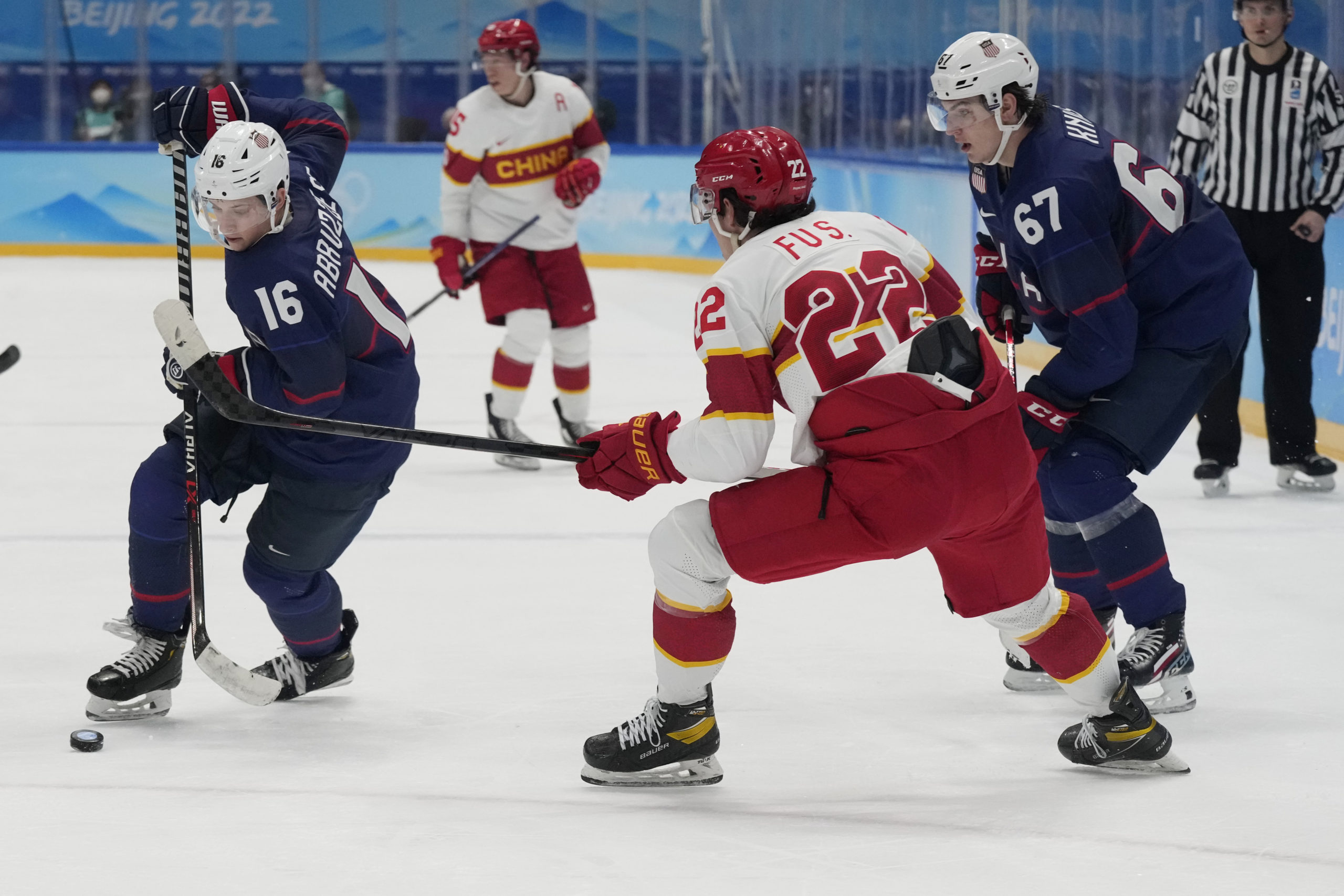Drafted in the fourth round by the Maple Leafs as a double overager out of the USHL, forward Nick Abruzzese will never be known as the biggest, fastest, or strongest player on the ice.
At 5’10, and 174 pounds, Abruzzese doesn’t have the physical tools that a lot of players in today’s NHL possess.
The reason why he’s been able to get so far in hockey — he’ll make his NHL debut in Philadelphia on Saturday — is that he’s found ways to make that not matter. Simply put, he’s one of the smarter prospects I’ve followed.
Want to learn elite components of the game? Watch Nick Abruzzese play hockey and he’ll teach you everything you need to know. #TeamUSA https://t.co/BAwDb3Xb6R
— Noëlle Needham (@NeedhamNoelle) February 13, 2022
Forecasting
The engine that drives Abruzzese’s game is his elite hockey sense. His ability to forecast where the play is going to go is what makes his lack of straight-line speed less relevant in many instances.
Instead of charging mindlessly towards the puck or into contact, Abruzzese always takes the best route he can find towards where the puck is headed. When his team has the puck, he’s terrific at getting open and making himself a good passing option. When they do not, Abruzzese “works smart,” taking good routes to break up passes/breakout attempts.
Instead of skating towards #22 red and forcing a hit, Abruzzese backs off, keeps his stick in the right lane, and picks off the pass. He follows that up by completing a tricky pass to an open teammate while under pressure, allowing Harvard to advance up the ice.
Below, Abruzzese takes a great route on the forecheck to break up the exit attempt and then makes a really difficult slip pass to an open teammate in the middle:
Some players win races to pucks and get puck touches because of their raw speed, size, and strength. Abruzzese knows he doesn’t have those same gifts, but he also knows how to still get the same results in a different way.
Playmaking
Prorated per 60 minutes, Abruzzese led Harvard in primary assists, total assists, shot assists, and slot passes at even strength this season according to Instat Hockey.
The forward always has his head on a swivel, constantly scanning to see where everybody else is on the ice. That, paired with his high-end puck skill, allows him to make dangerous passes that most players don’t see.
He’s the master of the no-look pass, mostly because he already knows where everybody else is. He oftentimes knows where he wants to pass the puck before he even touches it.
Catching up on Leafs prospects after a long weekend of scouting. Here’s a nice assist from #LeafsForever prospect Nick Abruzzese this past Saturday – forcing a turnover on the forecheck and then putting a no-look backhand pass onto his teammates tape: pic.twitter.com/kgnIYss9bP
— Josh Simpson (@joshsimpson77) December 6, 2021
He’s unfazed by pressure — and in fact, oftentimes invites it, creating space for his teammates before sending a tricky pass onto their tape.
All of these elements have contributed to Abruzzese becoming one of the NCAA’s premier playmakers since his arrival at Harvard a couple of years ago.
We see these elements on display not just in the offensive zone but all over the ice. Abruzzese makes these types of complex plays under pressure in transition, allowing Harvard to move the puck up the ice with control.
We could see a good example of this in the first clip of this article. The data supports this, as Abruzzese led Harvard in controlled entries via a pass/60 and was also one of their better players at carrying the puck out of the defensive zone and into the offensive zone with control.
Projection
Abruzzese may not have the raw tools to become a star player at the NHL level, but he’s going to be able to provide offense for the Leafs lower in their lineup. I expect him to be able to contribute to the Leafs bottom six and power play in a role similar to what Jason Spezza has been playing since his arrival in Toronto.
Will he be in the team’s playoff lineup? It all depends on what kind of fourth line Sheldon Keefe wants to deploy. If he wants more of a physical, throwback style of fourth line, Abruzzese isn’t what he’s looking for. However, if Keefe is looking for more scoring outside of the top six, he’s got a viable option in Abruzzese.

































